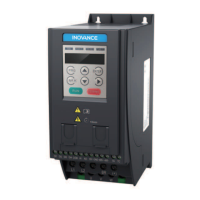Mechanical Installation
‑35‑
1.3.4 Installing Expansion Screws
To install the cabinet on a cement floor, embed expansion nuts in advance in the
floor at positions corresponding to the fixing holes of the cabinet for fixing the
cabinet.
The following figure shows the steps of installing expansion screws, where ❶
indicates an expansion screw, ❷ indicates the cabinet, and ❸ indicates an M12 bolt.
1. Drill a hole for the expansion screw. The hole diameter shall be slightly smaller than
the maximum outer diameter of the screw, and the hole depth shall be greater than
the expansion screw length. The expansion screw must be vertical to the ground, as
shown by "Step 1" in the following figure.
2. The expansion screw consists of a bolt spring enclosure and a screw part. Use a
hammer to knock the expansion screw into the hole and ensure that the screw
head is below the ground surface, as shown by "Step 2" in the following figure.
3. Place the cabinet and tighten the M12 screw. The screw part of the expansion screw
will be pulled upward, so that the spring enclosure will be deformed outward for
fixing, as shown by "Step 3" in the following figure.
Figure 1‑20 Installing an expansion screw
1.3.5 Requirements on Foundation
● Separate high‑voltage cables from low‑voltage cables by placing them on different
brackets. For failures to do so due to any restrictions, place the low‑voltage cables
in completely enclosed metal pipes.
● The cable trench must be: a) made of incombustible materials; b) smooth,
moisture‑proof, and dust‑proof; and c) able to prevent intrusion of animals.

